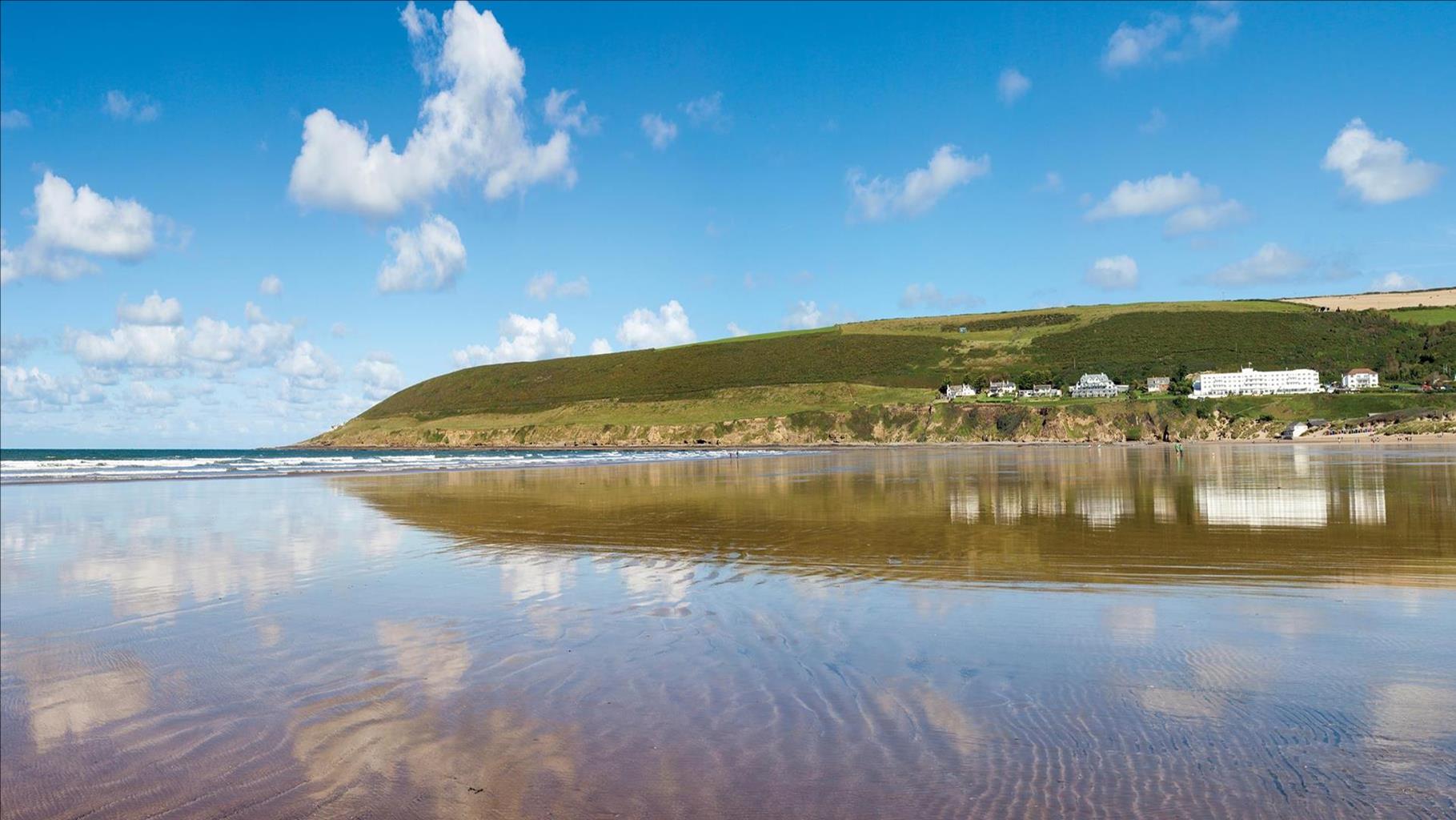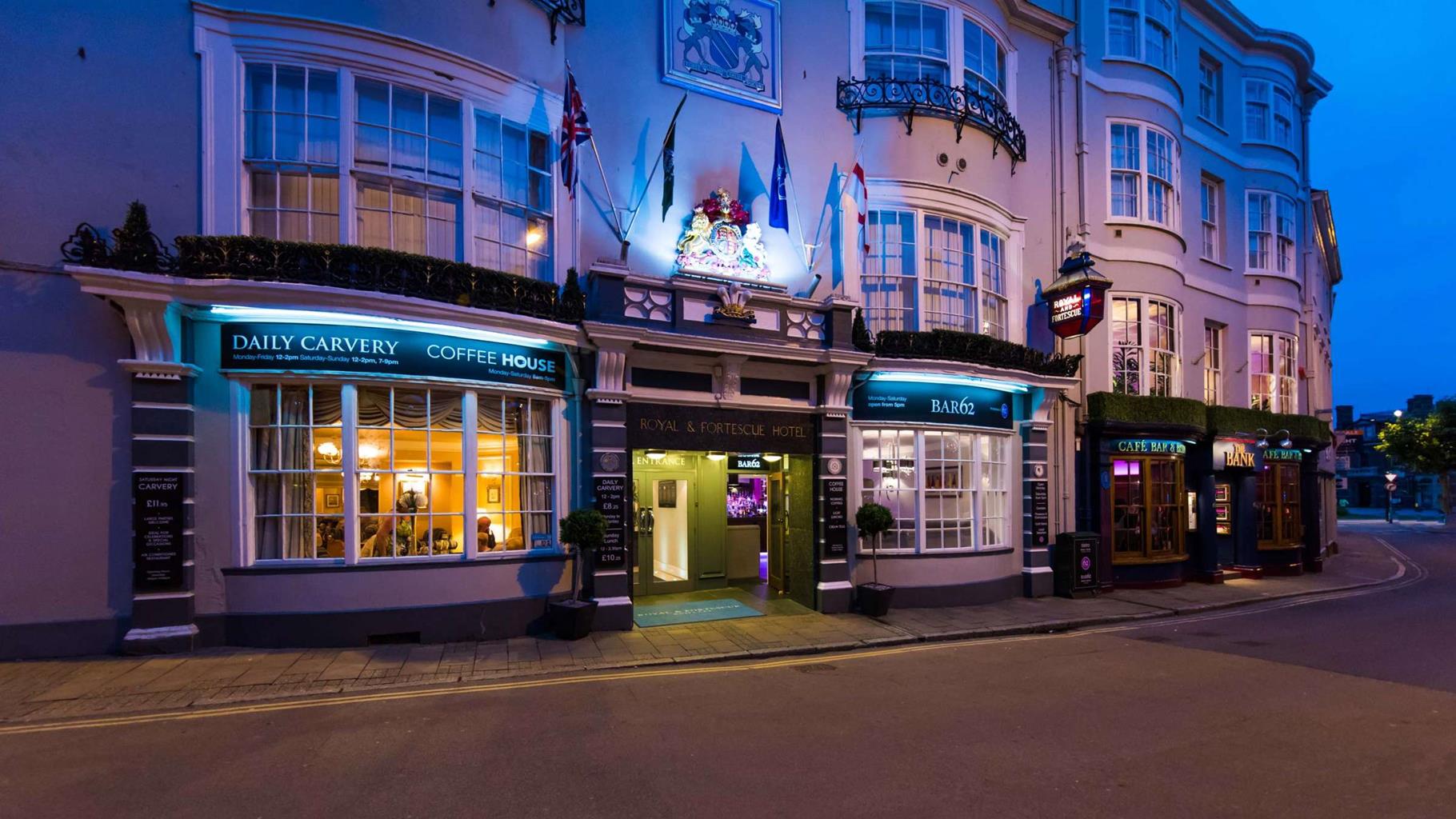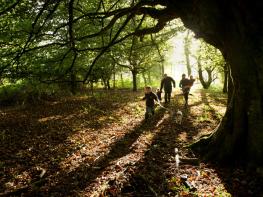Surf Bay is ideally situated in Westward Ho! with its own access to the Burrows, Pebble Ridge…
Northam Burrows Country Park

Pick a calm day for this walk around a peninsula of coastal grassland, with views across the broad Taw–Torridge estuary
3.25 miles (5.3kms)
About the walk
Northam Burrows, a Site of Special Scientific Interest, is an extraordinary and unexpected feature on the more usually rugged north Devon coast: 625 acres (253ha) of level, windswept, grassy coastal plain jutting out into the Taw–Torridge Estuary, fringed by sand dunes, tidal mudflats and saltmarsh, the haunt of sheep, horses and wading birds. It is also used by walkers, and is home to the Royal North Devon Golf Club. The route here follows the Coast Path round the rim of the country park, and returns across the neck of the peninsula, weaving around the golf club greens (fenced off to protect them from livestock).
The Burrows are made up of a number of varied habitats, each supporting different flora and fauna. The dunes behind the pebble ridge run along the northwestern side of the Burrows, and separate the Atlantic from the coastal grassland. On the fixed dunes (behind the mobile windblown ones nearer the shore) you may see signs of badgers and rabbits, and ground-nesting birds such as wheatears and skylarks. The grassland areas are grazed by sheep and horses, and criss-crossed by 15 miles (24km) of drainage ditches. Skern, passed at Point 3, is an area of mudflat colonised by saltmarsh, and serves as a feeding ground for waders and wintering birds such as Brent geese.
The village of Westward Ho! (from where the Pebbleridge car park is accessed) is a strange mix of large Victorian houses, static caravan parks and contemporary apartment blocks. The settlement developed post-1855, following the publication of Westward Ho!, a novel by Charles Kingsley (1819–75). Kingsley spent his childhood at Clovelly, a few miles west along the coast.
Walk directions
From the car park there’s a choice of two routes. At low tide cross the walkway over the pebble ridge by the information board, and turn right along the 2-mile (3.2km) long Westward Ho! beach, passing low dunes, with views towards Lundy (left). Past low sandy cliffs the ridge bears right; look for a gap in the dunes, beyond which you may spot a Coast Path post by the 6th hole on the Royal North Devon golf course. Alternatively, follow Coast Path signs along the track past Sandymere (a seasonal pool), then between the dunes and Burrows Centre, to reach the post. (The centre is open from Easter weekend to the end of October.)
Pass through the dunes to reach the post, and turn left along the edge of the golf course, following yellow arrows past the 7th and 8th holes of the golf course and along the Taw–Torridge estuary, with views to Braunton Burrows. Cross a level grassy area, with views ahead to Appledore and Instow on the opposite bank of the Torridge.
At a Coast Path signpost turn right towards a line of seats overlooking Skern tidal marsh. At the edge of the marsh bear right across level grassland, aiming for a parking area.
From the parking area follow the access lane along the edge of Skern, a magnet for birdlife on account of its rich food supply. The best time to spot waders is one to two hours before high tide.
At the third ‘sleeping policeman’ road bump turn right down the grassy bank, keeping to the left of a broad, grassy sward. Initially head for the cliffs to the west of Westward Ho!, then keep ahead along the edge of the golf course, aiming for the car park which will be seen in the distance. You’ll cross a fairway as you return to the car park, so watch out for golf balls.
Additional information
Beach, pathless grassland
Flat coastline
Livestock and wildlife, so under control at all times; no dogs on beach 1 May–end September
OS Explorer 139 Bideford, Ilfracombe & Barnstaple
Sandymere car park
The Burrows Centre (when open)
<p>Gates to the Country Park shut 6pm–7am winter, 10pm–7am summer; small entrance fee for cars in summer; do not walk on the estuarine tidal mudflats</p>
WALKING IN SAFETY
Read our tips to look after yourself and the environment when following this walk.
Find out more
Also in the area
About the area
Discover Devon
With magnificent coastlines, two historic cities and the world-famous Dartmoor National Park, Devon sums up all that is best about the British landscape. For centuries it has been a fashionable and much loved holiday destination – especially south Devon’s glorious English Riviera.
Close to the English Riviera lies Dartmoor, one of the south-west’s most spectacular landscapes. The National Park, which contains Dartmoor, covers 365 square miles and includes many fascinating geological features – isolated granite tors and two summits exceeding 2,000 feet among them.
Not surprisingly, in Dartmoor the walking opportunities are enormous. Cycling in the two National Parks is also extremely popular and there is a good choice of off-road routes taking you to the heart of Dartmoor and Exmoor. Devon’s towns and cities offer stimulating alternatives to the rigours of the countryside.
Nearby stays
Restaurants and Pubs
Nearby experiences
Recommended things to do
Why choose Rated Trips?
Your trusted guide to rated places across the UK
The best coverage
Discover more than 15,000 professionally rated places to stay, eat and visit from across the UK and Ireland.
Quality assured
Choose a place to stay safe in the knowledge that it has been expertly assessed by trained assessors.
Plan your next trip
Search by location or the type of place you're visiting to find your next ideal holiday experience.
Travel inspiration
Read our articles, city guides and recommended things to do for inspiration. We're here to help you explore the UK.













